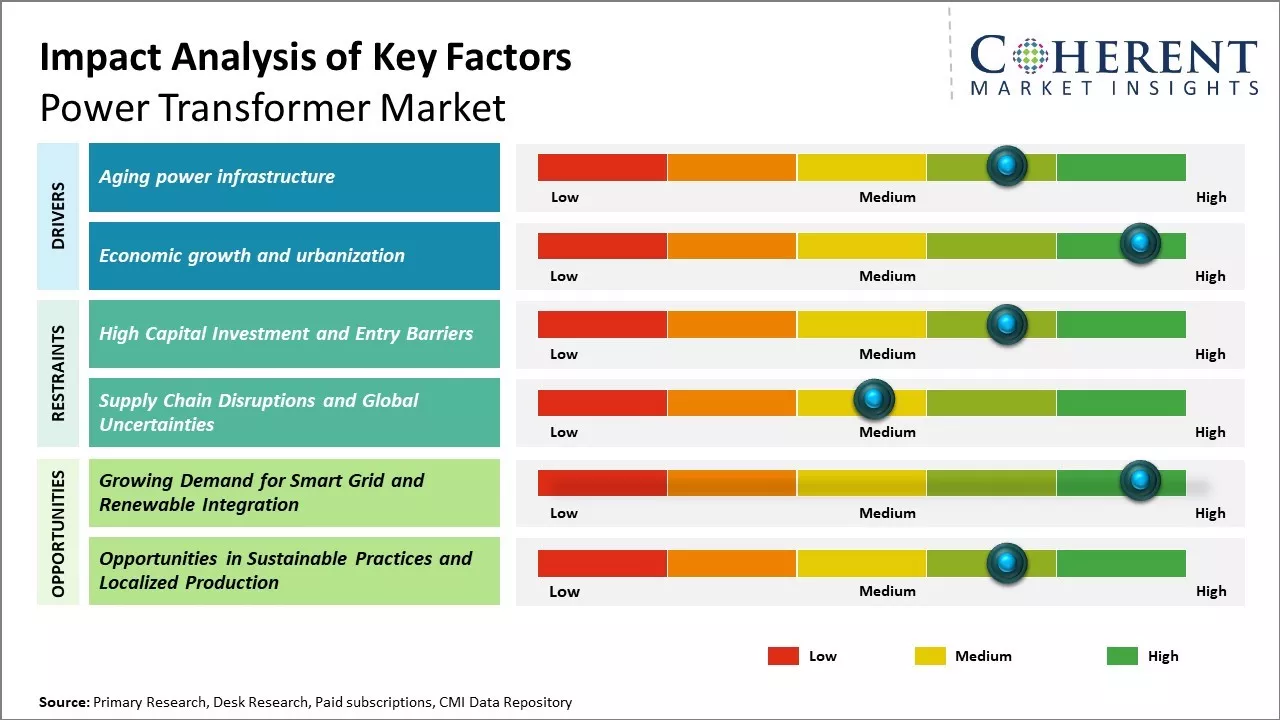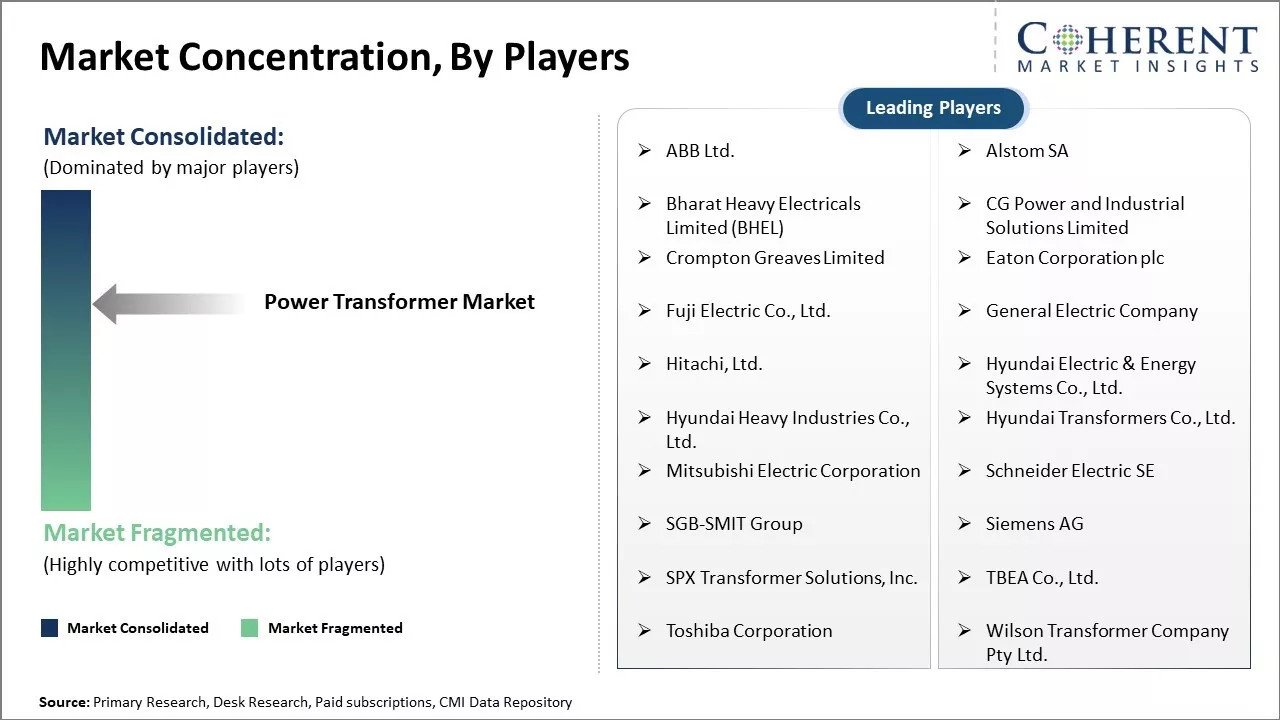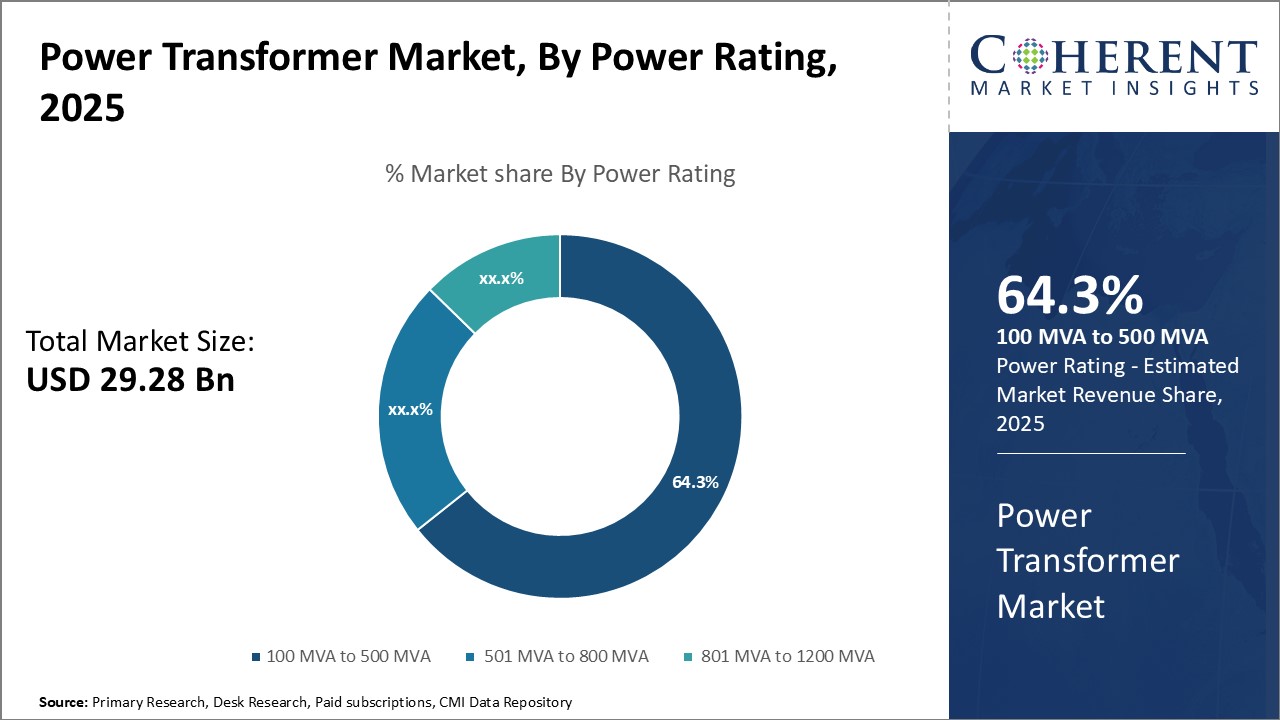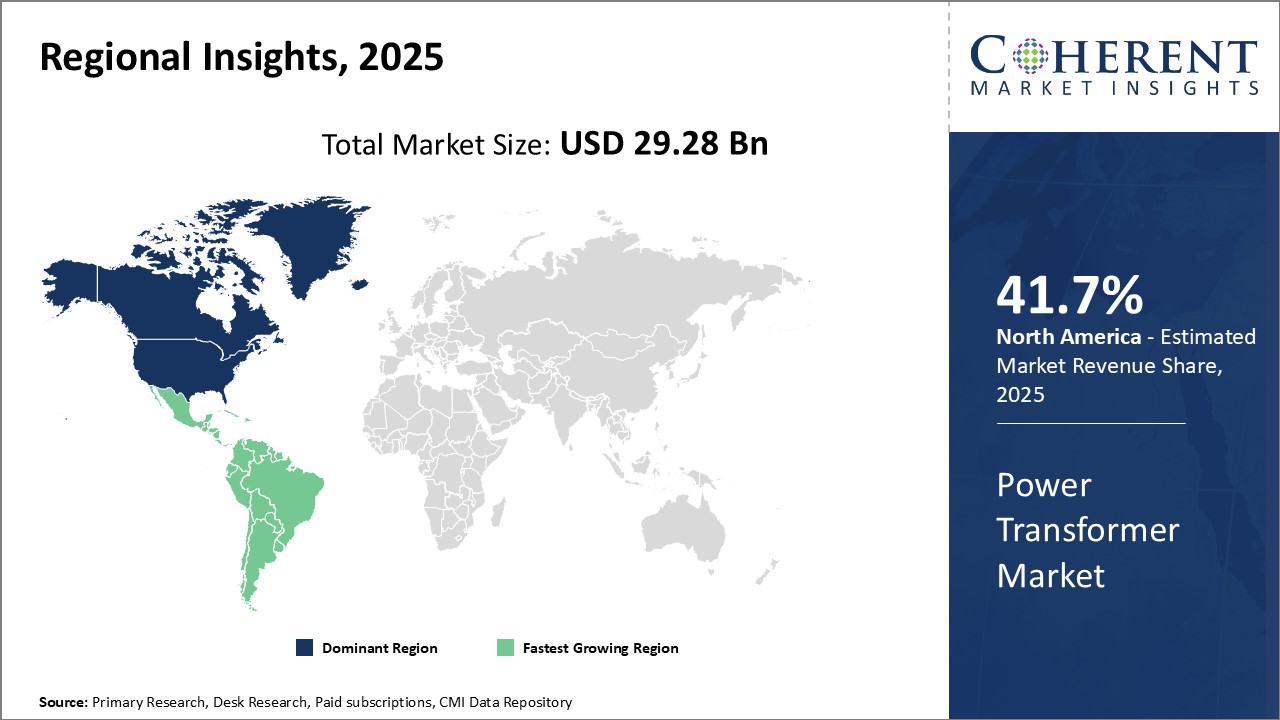The power transformer market is estimated to be valued at US$ 29.28 billion in 2025 and is expected to reach US$ 54.25 billion by 2032, exhibiting a compound annual growth rate (CAGR) of 9% from 2025 to 2032.

Discover market dynamics shaping the industry: Download Free Sample
Rapid industrialization and infrastructure development across major economies are driving significant investment in improving and expanding transmission and distribution networks. This is expected to increase the demand for power transformers for efficient power transmission and distribution over the coming years.
The market is witnessing growing adoption of smart transformers globally. The increasing deployment of renewable energy and growing emphasis on energy efficiency are propelling the demand for smart transformers. Additionally, the ageing existing grid infrastructure in developed markets is compelling utilities to replace legacy transformers with smart and digitally enabled solutions for effective grid management. This trend is expected to gather further steam in the coming years.
Aging power infrastructure
Many of the existing power grids and transmission infrastructure in developed as well as developing nations are aging and need replacement. Transformers are at the heart of these transmission and distribution networks and play a critical role in ensuring uninterrupted power supply. According to our analysis, power grids in the U.S., Europe, and parts of Asia Pacific average 25-35 years of age. The constant wear and tear over several decades has reduced their performance efficiency and reliability. Utilities and grid operators are under pressure to modernize and strengthen their transmission capabilities to meet the growing electricity demand. This provides a steady demand for the replacement of old and obsolete power transformers with new and more efficient models. Additionally, governments and regulatory bodies in different countries have also introduced stricter norms regarding transmission losses as part of their climate change commitments. This is further propelling the need for upgrades to limit energy wastage during long-distance bulk power transportation.
For instance, in 2022, the region produced approximately 14,546.4 TWh of electricity, which represented about 49.8% of the world's total electricity generation, according to the Energy Institute Statistical Review of World Energy 2023.

Get actionable strategies to beat competition: Download Free Sample
Economic growth and urbanization
Rapid pace of industrialization and infrastructure development especially in developing economies is fueling their electricity needs manifold. At the same time, trends like urbanization where majority of population is shifting bases to cities have led to dense localization of power consumption patterns. This has necessitated governments and private players to invest heavily in setting up new transmission corridors and substations, extending the distribution networks deep into rural hinterlands. As a result, the power transformer demand is expected to rise substantially in the coming years to support these capacity expansion initiatives. For example, countries like India and China undergoing massive urban transitions are undertaking ambitious projects like “Power for All” and “Rural Electrification” which would need setting up of thousands of new transformers. Similarly, construction of smart cities and developing industrial townships or special economic zones requires robust power supply infrastructure backbone which acts as a key demand driver
For instance, in January 2023, the State Grid Corporation of China revealed plans to invest approximately USD 77 billion in transmission infrastructure and energy storage systems for the year, marking a nearly 4.0% year-over-year increase.
Key Takeaways of Analyst:
The power transformer market is expected to witness steady growth over the forecast period driven by increasing investments in grid infrastructure modernization projects worldwide. The demand for smart transformers is growing notably owing to their ability to monitor grid conditions and optimize power usage. Asia Pacific currently dominates the market and is likely to maintain its leading position throughout the next decade backed by ongoing industrialization and infrastructure development activities across developing nations like China and India.
A key challenge for market players could be rising raw material costs as transformers require a significant amount of copper and steel. Furthermore, stringent energy efficiency standards in Europe and North America are prompting utilities to replace aging assets, providing opportunities for companies to supply upgraded units. Manufacturers should also explore opportunities in renewable energy integration as the share of solar and wind power increases globally.
On the other hand, geopolitical tensions could delay several grid projects, especially cross-border interconnectors. Additionally, economic uncertainties arising from the ongoing pandemic may prompt some utilities to postpone equipment replacement programs temporarily. Nevertheless, the growing emphasis on smart grid technology rollouts and the retirement of old transformer fleets are expected to ensure overall expansion of the market.
Market Challenges: High Capital Investment and Entry Barriers
One significant challenge in the power transformer market is the high capital investment required to establish manufacturing plants. This substantial financial burden deters new players from entering the market, limiting competition and innovation. Existing companies must continuously invest in upgrading facilities to keep up with technological advancements and regulatory requirements.
Market Opportunities: Growing Demand for Smart Grid and Renewable Integration
The increasing investments in smart grid technologies and renewable energy integration present significant opportunities for the power transformer market. These advancements require innovative transformer designs that can efficiently manage fluctuating power loads and ensure grid stability. Companies that focus on developing transformers compatible with smart grids and renewable sources can capitalize on this growing demand and secure a competitive edge.

Discover high revenue pocket segments and roadmap to it: Download Free Sample
In terms of power rating, 100 MVA to 500 MVA dominates the market owing to reliability and flexibility
The 100MVA to 500MVA capacity segment is expected to contribute the highest share of 64.3% in 2025. The power transformer market due to its reliability in meeting a wide range of power needs drives demand for the 100MVA to 500MVA capacity range. Transformers in this range can efficiently support power distribution from the transmission grid to industrial, commercial and residential end users. Their versatile design allows connections to transmission lines from 100kV up to 230kV while having enough capacity to step down voltages for downstream distribution.
A key factor driving demand is the growing power requirements of large commercial and industrial facilities. Transformers rated from 100MVA up to 500MVA are well-suited to reliably deliver electricity to large shopping complexes, office parks, manufacturing plants and other major commercial/industrial developments. Their flexibility means a single transformer can support the evolving power needs of a facility as it expands over time. This saves costs versus installing multiple smaller transformers that would require higher combined capacities.
Utilities also favor this capacity segment for distribution from regional transmission substations to urban and suburban areas. Transformers from 100MVA up to 500MVA can efficiently handle the power loads from populations from tens of thousands to over 100,000 residents. Even during peak demand periods like heat waves, they ensure smooth and reliable power flows. Moreover, utilities appreciate that a single larger transformer reduces infrastructure requirements versus implementing multiple smaller capacity units. This capacity range provides sufficient flexibility that distribution networks can be readily upgraded or reconfigured as load patterns change.
Areas with varying electricity needs throughout the day, such as mixed residential-commercial districts, universities and large military bases, also drive strong demand. Transformers rated from 100MVA up to 500MVA can readily adapt their outputs to handle load fluctuations. For example, they can meet high daytime commercial and faculty demands yet still provide stable power during evenings and weekends focused more on residential usage. Overall, utilities and end users appreciate how transformers in this popular 100MVA to 500MVA capacity range deliver a unique blend of reliability, flexibility and cost-efficiency to a wide variety of applications.
In terms of phase, three phase dominates the market owing to technical advantages over single-phase units
In the global power transformer market, the highest market share of 85.4% in 2025 is captured by three-phase transformers due to their technical advantages over single-phase units. Three-phase configurations deliver significantly greater power density while utilizing the same frame size as a single-phase model. This means more electricity can be distributed using equal or less transformer infrastructure. The three-phase design also yields inherent efficiency gains through lower losses.
A key factor driving preference is that three-phase technology allows higher continuous power output from a given transformer footprint. Single-phase transformers must essentially provide one-third of the capacity in three separate units to deliver equivalent power, wasting materials and taking up extra space. The single core and winding design of three-phase units concentrates their capacity into a more compact form factor. This is highly valued by utilities seeking to maximize power flows within substation properties and along transmission/distribution corridors where space is limited.
Additional efficiency gains arise from lower winding resistances and core losses inherent to three-phase designs. With phases spread evenly over 120 degrees, magnetic fluxes generated by each cancel each other out, reducing heat generation versus single-phase transformers. Less energy is lost to heat, translating directly to operational cost savings. Moreover, three-phase designs allow for optional equipment like on-load tap changers to dynamically control voltage and losses over the transformer's lifetime.
Overall, the enhanced power density and inherent efficiencies of three-phase technology give these transformers clear economic and performance advantages. Their higher capacity per unit footprint leads to lower infrastructure requirements and networking costs per watt delivered. When coupled with reduced losses over time, three-phase transformers deliver maximum value to utilities and high-demand industrial/commercial customers.
In terms of application, utilities industry dominates the market owing to robust infrastructure spending
The utilities segment is expected to contribute the highest share of 44.2% in 2025 owing to robust infrastructure spending aimed at ensuring reliable electricity services. Transformers play a vital role in utility networks, efficiently stepping voltages down for distribution to end consumers. As population centers grow rapidly worldwide and electricity needs escalate with rising standards of living, maintaining reliable power delivery is a continuous high priority, driving strong demand from utilities.
Governments recognize electricity access as critical for social stability and economic development. Major investments flow into modernizing national/regional grid infrastructure with advanced power transformer technologies. These help reinforce transmission infrastructure, densify distribution networks, and introduce smart grid/automation capabilities. Utilities also install new transformer capacity ahead of demand to avoid outages that damage business/social activity.
Additionally, worldwide environmental policy changes accelerate the transition toward renewable/clean energy sources like solar and wind. Though intermittent, these distributed generation assets place new demands on balancing electricity flows that transformers help address. Their ability to efficiently step up and down voltages assists in integrating renewables into transmission and distribution systems on a vast scale.
Meanwhile, reliability concerns are amplified as infrastructure ages in some markets. Utilities prioritize recapitalizing transformer fleets to avoid potential failures causing lengthy blackouts. Their role is too important for compromise, driving rigorous maintenance/replacement plans and healthy demand. Overall, utilities worldwide recognize Power transformers as indispensable workshorses underpinning reliable electricity delivery. This ensures robust, consistent demand from the utilities segment for the foreseeable future.

Need a Different Region or Segment? Download Free Sample
North America has established itself as the dominant region in the global power transformer market. The region is expected to account for a market share of 41.7% in 2025. The presence of major OEMs and component suppliers in countries like the U.S. and Canada has created a mature supply chain ecosystem in the region. With rising investments in T&D infrastructure upgrade and modernization projects by utilities, the demand for transmission and distribution transformers remains steady. Several utilities in the U.S. are actively replacing the aging power infrastructure to improve grid resilience and enable greater renewables integration.
The adoption of smart grid technologies is further driving the need for more advanced transformers with real-time monitoring capabilities. Leading manufacturers like ABB, Siemens, and GE offer a wide portfolio of digital transformers catering to smart grid infrastructure needs. In addition, North America witnesses significant export volumes of power transformers to other high-growth markets. The competitive pricing and high quality standards of transformers manufactured in the U.S. and Canada encourage imports by several Asian and Latin American countries.
On the other hand, the Asia Pacific region has emerged as the fastest growing regional market with a CAGR of 11.2% for power transformers. Undergoing rapid electrification, countries like China, India, and Vietnam, are investing heavily in transmission and distribution networks to meet the rising electricity demand from industrial, commercial and residential sectors. Privatization of state utilities and regulatory mandates on grid modernization have accelerated transformer procurement activities across emerging APAC nations.
Local giants such as TBEA in China and Bharat Heavy Electricals Ltd (BHEL) in India have sizable presence catering to domestic requirements. However, many APAC utilities also import high capacity transmission transformers and digital solutions from global heavyweights looking to participate in the region’s infrastructure spending. The large export-oriented manufacturing sectors in Asia Pacific also propels the demand from private industries and special economic zones. Burgeoning industrialization and electrification in APAC's developing nations will continue bolstering the region’s position as the primary growth driver for the global power transformer industry.
Power Transformer Market Report Coverage
| Report Coverage | Details | ||
|---|---|---|---|
| Base Year: | 2024 | Market Size in 2025: | USD 29.28 Bn |
| Historical Data for: | 2020 To 2024 | Forecast Period: | 2025 To 2032 |
| Forecast Period 2025 to 2032 CAGR: | 9.2% | 2032 Value Projection: | USD 54.25 Bn |
| Geographies covered: |
|
||
| Segments covered: |
|
||
| Companies covered: |
ABB Ltd., Alstom SA, Bharat Heavy Electricals Limited (BHEL), CG Power and Industrial Solutions Limited, Crompton Greaves Limited, Eaton Corporation plc, Fuji Electric Co., Ltd., General Electric Company, Hitachi, Ltd., Hyundai Electric & Energy Systems Co., Ltd., Hyundai Heavy Industries Co., Ltd., Hyundai Transformers Co., Ltd., Mitsubishi Electric Corporation, Schneider Electric SE, SGB-SMIT Group, Siemens AG, SPX Transformer Solutions, Inc., TBEA Co., Ltd., Toshiba Corporation, and Wilson Transformer Company Pty Ltd. |
||
| Growth Drivers: |
|
||
| Restraints & Challenges: |
|
||
Uncover macros and micros vetted on 75+ parameters: Get instant access to report
*Definition: The power transformer market consists of manufacturers and suppliers that produce transformers primarily used in utility-scale power transmission and distribution infrastructure. Power transformers are installed in substations and increase or decrease voltage levels along the electric grid to efficiently transmit electricity over long distances. They help regulate and control voltage levels as electricity moves from generation plants through transmission systems and to end users. Key players in the power transformer market provide large units ranging from 100 MVA up to over 1000 MVA capacity required for high voltage applications.
Share
Share
About Author
Ramprasad Bhute is a Senior Research Consultant with over 6 years of experience in market research and business consulting. He manages consulting and market research projects centered on go-to-market strategy, opportunity analysis, competitive landscape, and market size estimation and forecasting. He also advises clients on identifying and targeting absolute opportunities to penetrate untapped markets.
Missing comfort of reading report in your local language? Find your preferred language :
Transform your Strategy with Exclusive Trending Reports :
Frequently Asked Questions
Joining thousands of companies around the world committed to making the Excellent Business Solutions.
View All Our Clients